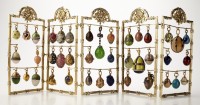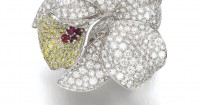Opals: The unsung heroes of the gem world?
Often muted in tone, nothing can play up color quite like the precious opal
BY ELLEN HUNTER GANS
Classically elegant.
Dark and mysterious.
Spicy with a bit of fire.
“Nothing plays up color like opals.”
For a gem often dismissed merely as “white,” this statement from Dr. Lance Grande, Senior Vice President and Head of Collections and Research at Chicago’s Field Museum, is illuminating.
Contrary to popular belief, an opal can come in colors ranging from clear to black and—in the right light—quite literally everything in between. Every personality, every occasion, and every ensemble can find a flawless match in this unassuming gem.
[pullquotefancyleft]Contrary to popular belief, an opal can come in many colors[/pullquotefancyleft]
Commercially available opals typically fall into one of three varieties: white, black, and fire. Of the three, black opals are the least common and most valuable. “The dark background means that the flash of color is all you see,” says Dr. Grande.
Fire opals represent a spicy cousin to the black opal, showcasing undercurrents of intense reddish orange.
And the timeless “white” opal is more available but no less adept at turning heads.
Opals were immensely popular in ancient Rome, where the gem was believed to bring good luck and fortune. The luster is carried on today, as opals become an increasingly popular choice among discerning gem buyers.
Opal owners in New York have something in common with their surroundings: the faces on the iconic four-sided clock in the Grand Central Station terminal are each made from opal, with total value estimated as high as $20 million. Timeless, indeed.
-September 2012








